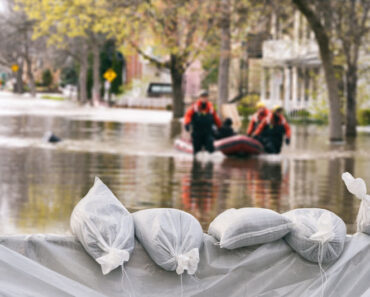Imagine for a moment that you are taking a break from the hustle and bustle of everyday life. You decide you need to get away from it all and disconnect for a bit, and that the best way to do so is to get out into nature.
So, you grab a pack of supplies and head out on a day hike. The weather is beautiful, the sun is warm on your skin, and you catch glimpses of wildlife here and there.
Everything seems to be going perfectly until, seemingly out of nowhere, you come face to face with a bear.
Bear attacks are actually quite low here in the United States, but that doesn’t mean you shouldn’t be prepared for one. There are several options for dealing with this type of situation, but it could end with a charging bear. If that happens, an effective bear spray could save the day and keep the bear alive.
What’s bear spray you ask?
Well, that’s what we will be discussing in this article, as well as:
- How to use bear spray
- Whether bear spray is always effective
- Why and how to carry bear spray
What Is Bear Spray?
Bear spray is very similar to the personal defense version known as pepper spray, which people use on other people. It’s a non-lethal means of dealing with threats and even an indirect hit of pepper spray will cause a person to immediately leave the area and seek fresh air.
Bear spray works by attacking the mucus membranes, causing an intense burning sensation in the upper respiratory system and involuntary eye closure. This can affect the bear’s ability to see and breathe properly.
Please note that bear spray is regulated by the Environmental Protection Agency.
This is because bear spray is made from the oil of red hot peppers (oleoresin of capsaicin) and it has a concentration of 1-2%. Whereas regular pepper spray generally contains between 0.18% on the low end all the way up to 3%.
How far bear spray will shoot is dependent on the manufacturer, but you should expect it to reach about thirty feet away. Even at this distance, bear spray leaves a pungent and undesirable odor in the area.
How To Use Bear Spray?
Bear spray comes in a small, handheld pressurized can that resembles a fire extinguisher but without the hose.
Depending on the manufacturer, one can of bear spray may look slightly different than another – but generally, they look like the image below. It is a can with a handle on top to hold when using, a “button” or lever to depress which releases the spray, and a safety clip that helps to prevent unintentional use.
If you are in bear country and find yourself experiencing a bear encounter with undesirable behavior that goes south – a charging bear – here is how to use bear spray:
- Hold the canister firmly in one hand and point it in the direction of the bear.
- Remove the safety clip and place your thumb on the trigger.
- Press the trigger once for a one to two-second burst when the bear is in very close range.
- Spray at the aggressive bear while trying to aim directly for the bear’s face and the bear’s eyes.
- After spraying, wait to see the bear’s reaction while walking backward. If the bear continues to advance or if the bear charges, spray another burst.
Never turn your back on the bear and do not run away. A sprayed bear will usually turn and leave the area.
Even if you have not sprayed yourself, you can expect bear spray to leave a pungent odor in the air that you can detect. Be cautious of spraying into the wind or in any other fashion that could cause the spray to blow back at you.
Below is a brief explanation and demonstration by Parks Canada on how to use bear spray:
How Effective Is Bear Spray?
Almost no method is going to tell you it is one hundred percent effective at its task because there is always a chance that something adverse could happen. However, bear spray has been proven to be one of the most effective methods to stop the aggressive behavior of attacking bears.
An article in the Journal of Wildlife Management stated that using bear spray stopped an aggressive bear over ninety percent of the time.
Here are a few moments caught on video of bear spray being used on bears and the bear stops after each use. The second video shows the spray being used on multiple bears.
Reasons To Carry Bear Spray
Other than its effectiveness, there are a few more reasons why you may want to consider carrying bear spray:
Lightweight and Compact
Bear sprays do come in different sizes but generally, you can expect one can to weigh around one pound. This makes them lightweight and compact enough to easily carry on a pack, bike, or beltline.
Affordable
Depending on the brand and the size of the can, bear sprays will vary in price, but you can expect to pay around $40 for most bear sprays and this gives you an affordable option for dealing with potential threats. You can buy bear spray online or at sporting goods stores.
Easy To Use
Bear sprays are incredibly easy to use, basically point and spray, so no special training is required. However, it’s always a good idea to practice using the tools you carry before needing them. To practice using bear spray, use a can that has already been partially used, one that is expired, or a dummy can that is filled with inert gas.
No Permits
Bear spray offers a method to deter bear attacks that don’t require any permits or special licensing. It is legal to purchase and carry bear spray in the United States without any special requirements.
How To Carry Bear Spray Effectively
When walking in bear country, bear spray should not be carried in your pack. The bear deterrent needs to be stored somewhere that you can access it at a moment’s notice.
Bear deterrent spray should be carried in a holster on your beltline or attached to the outside of a pack. If the bear sprays you buy come with a zip tie-type of plastic strap that needs to be cut off before use, cut it off before you head out but leave the safety clip in place.
Additionally, when you are bedding down for the night in bear country, have a can of bear spray within arm’s reach, but leave the safety clip in place to help prevent accidental discharge.
FAQs
Do you spray bear spray on yourself or on the bear?
Bear spray is not a repellent like an insect repellent. Do not spray it on people, any of your gear, human food, or any other pre-sprayed objects. When the bear spray is used improperly, like a repellent, it can actually attract bears.
How long does bear spray last after use?
This can depend on several factors but generally, the effects can last between half an hour to an hour.
What do you do if you get bear spray on you?
Luckily, the effects of the bear spray are not permanent; while it affects everyone differently, you can expect up to an hour of discomfort. If you end up getting bear spray on you the best thing to do is to immediately wash the affected areas with lots of clean water and soap.
How do you store bear spray?
When not in use, bear spray should be stored in a secure location and you should treat bear spray like any other self-defense tool, i.e. firearms, pepper spray, etc.
Bear spray should also be stored in a location that has moderate temperatures. Extremely hot temperatures can cause the can to explode, which is why it shouldn’t be left in a vehicle or in direct sunlight. Also, extremely cold temperatures can cause the can to be ineffective.
How long is bear spray good for?
A new can will usually have a shelf life of a few years, but always check the expiration date before purchasing. Also, periodically check your bear spray and replace any canisters marked with an old expiration date.
Is bear spray only effective on bears?
No. As stated earlier, bear spray is very similar to pepper spray, just with a higher concentration. Bear spray has been found to be effective against a wide variety of mammals such as mountain lions, bobcats, moose, and wild dogs just to name a few.
References:
YouTube.com











![Bug-Out Medicine | Dr. Bones & Nurse Amy [PODCAST] Bug-Out Medicine | Dr. Bones & Nurse Amy [PODCAST]](https://survivalcove.com/wp-content/uploads/2022/03/Modern-Combat-and-Survival-Podcast-370x297.jpg)






















